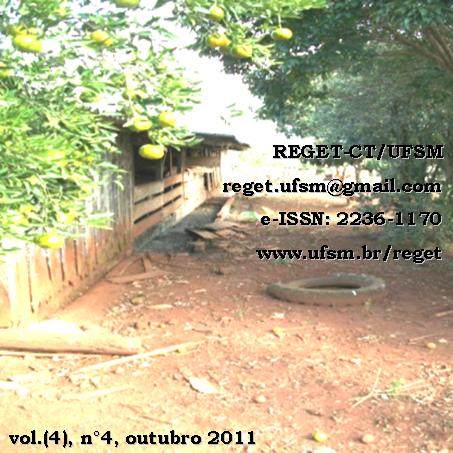EDUCAÇÃO AMBIENTAL, DESENVOLVENDO ATIVIDADES PARA MINIMIZAR O RUÍDO NA ESCOLA
DOI:
https://doi.org/10.5902/223611703903Keywords:
Noise, Environmental Education, Health, School noise.Abstract
A major problem faced by the population, is the lack of sanitation and care for water and soil,especially in rural areas, where there is no specific type of control over the issues of environmentalsanitation or when there is done so unsystematic, only appears to be triggered when a healthproblem in the community. Water pollution and soil increases every day due to residues of organicand inorganic materials, due to lack of sanitation and care of the man himself with hisenvironment, and also daily activities of rural workers that may be irreversible environment. Thisstudy aimed to relate human activities with environmental problems in the interior of Santo Angelo - RS, focusing on the pollution of soil and water. For this reason, participants are doingwork environment perception survey data on key factors of contamination in rural areas, througha photographic survey questionnaire and socio-environmental. From these data we can verify thequality of life in relation to issues of environmental sanitation and awareness of the population,allowing for discussion and promotion of environmental education, encouraging the formation ofa sense of citizenship and helping to promote sanitation in these areas, forming citizens able tocharge their rights to practice their duties to the preservation of natural resources, especiallywater and soil.
Downloads
References
DREOSSI, RAQUEL C. F. A Interferência do ruído na aprendizagem. Revista Psicopedagogia, São Paulo, v. 2,no. 64, p. 38-47, 2004.
ENIZ, ALEXANDRE DE O.; GARAVELLI, Sérgio L. Acústica de sala de aula: estudo de caso de 2 escolas da rede provada do Distrito Federal. Revista de Acústica e Vibrações, n. 31, jul., 2003.
ENIZ, ALEXANDRE DE O. Poluição sonora em escolas do distrito federal. Dissertação (Mestrado em Planejamento e Gestão Ambiental) – Universidade Católica de Brasília, Brasília, 2004. FIORILLO, Celso A. P. Curso de direito ambiental brasileiro. São Paulo: Saraiva, 2003.
GERGES, SAMIR N. Y. Ruído: fundamentos e controle. Departamento de Engenharia Mecânica da Universidade Federal de Santa Catarina, 1ª edição, Florianópolis, 1992.
KNECHT, HEATHER A.; NELSON, PEGGY B.; WHITELAW, GAIL M.; FETH, LAWRENCE L. Background oise levels and reverberation times in unoccupied classrooms: predictions and measurements. Am. J. Audiol., v. 11, n. 2, p. 65-71, dec. 2002.
LOPES, ODETE. Coletânea de Atividades de Educação Ambiental. Curitiba: Universidade Livre do Meio Ambiente, 2002.
PAIXÃO, DINARA X. DA. Análise das Condições Acústicas em Sala de Aula. Dissertação (Mestrado em Educação) – Universidade Federal de Santa Maria, Santa Maria, 1997.
PAIXÃO, DINARA X. DA. Caracterização do isolamento acústico de uma parede de alvenaria, utilizando análise estatística de energia (SEA). Tese (Doutorado em Engenharia de Produção) – Universidade Federal de Santa Catarina, Florianópolis, 2002.
RUSSO, IEDA C. P. A Importância da acústica e da psicoacústica para a audiologia: a influência da acústica das salas de aula na percepção da fala. Revista de Acústica e Vibrações, 16: 15-19, 1995.
SERRA, ESTHER C. & SERRA, MÁRIO R. El ruído urbano como factor contaminante em recintos escolares. In: Revista Latino Americana de Acústica. Córdoba: CIAL, 1992, v. 02, nº 01, 79p.
VALLE, SÓLON DO. Manual prático de acústica. 1.ed. Rio de Janeiro: Música & Tecnologia, 2006.
VIEIRA, IVONE L. O ruído e a perda auditiva. CEFAC, Recife, 1999. Disponível em:<http://www.cefac.br/library/teses/1565f80d879b2ef53634d25e0a4f29f7.pdf >. Acesso em: 24 jul. 2009.





